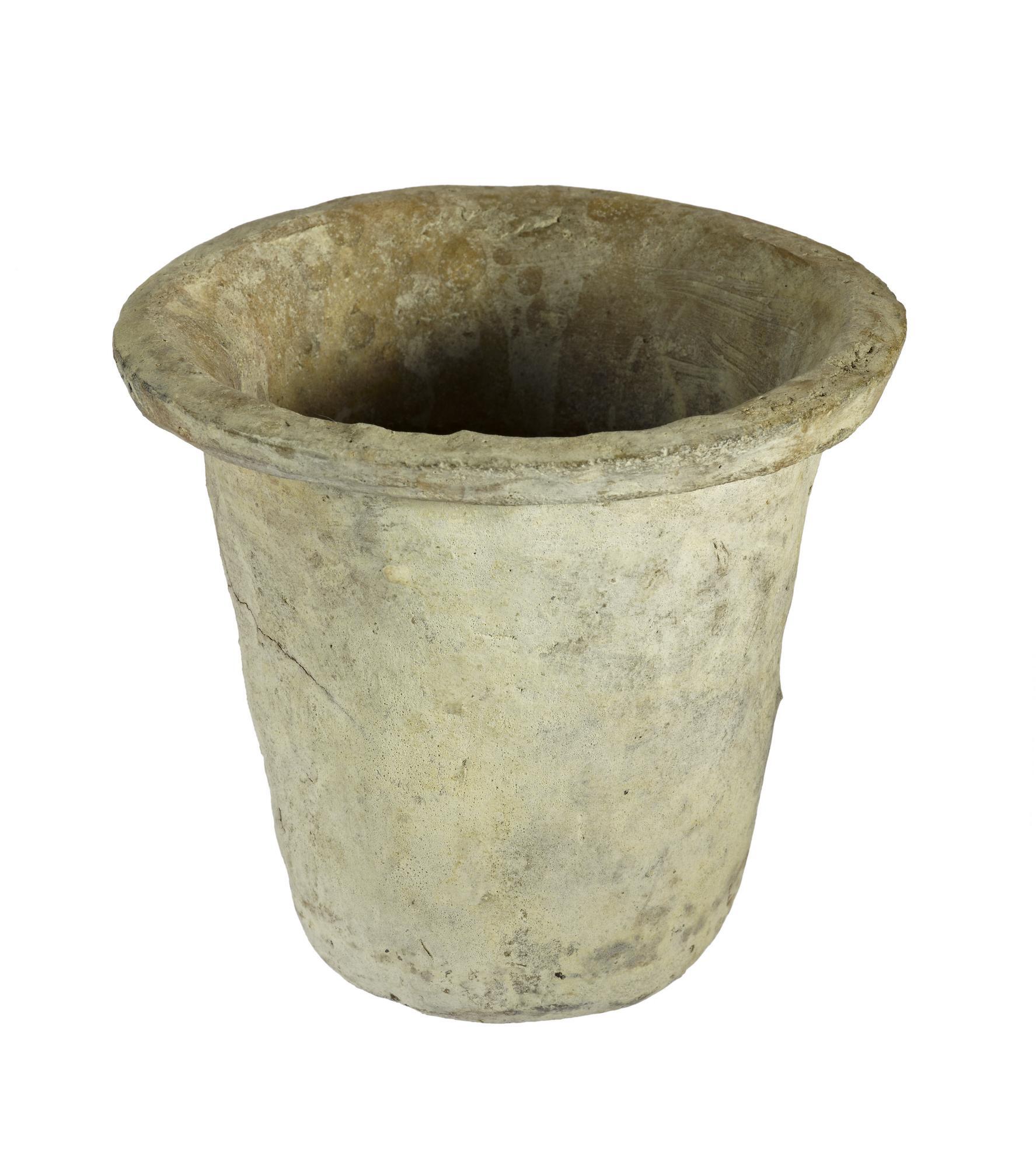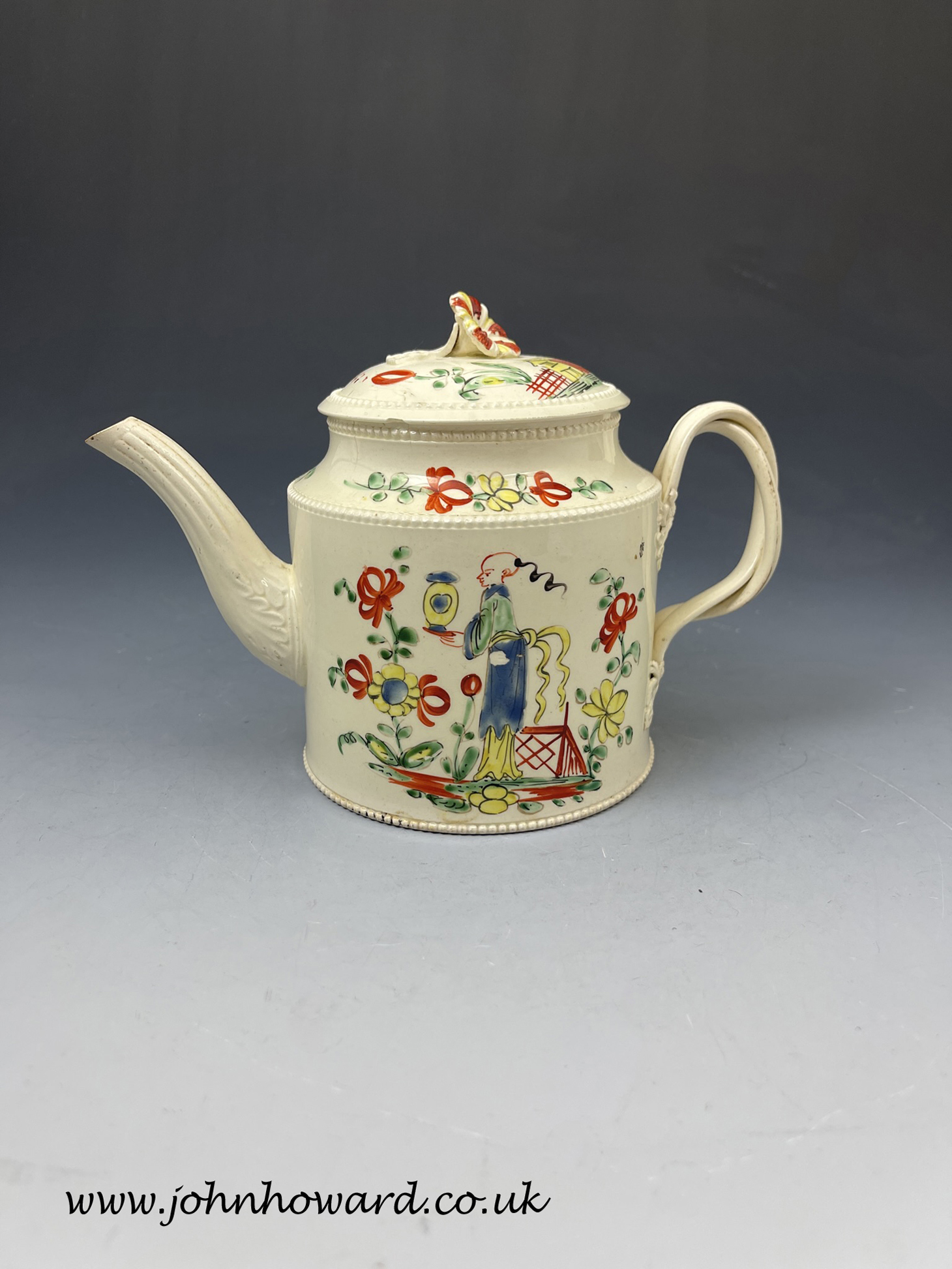2024-5-17
以前說過早期利茲的乳白瓷,是英國軟瓷,模仿的是中國風。在愛丁堡的蘇格蘭國家博物館裡,就有這樣兩把老茶壺:

Teapot of cream-glazed earthenware painted in enamel colours with Chinese landscapes, figures, buildings and flowers: English, Leeds, late 18th century。

Teapot of cream earthenware painted with an orange tree flanked by busts of William V (?) of Orange and Frederica Wilhelmina of Prussia (?): English, Leeds, probably decorated in Holland, c. 1775
紐約大都會博物館裡,也有一把這樣的茶壺,制式和畫片都不同,是人物頭像:
英國人擅於發明創造,英國的瓷器,走的是和歐洲大陸(主要指德國)不相同的瓷器發展路徑。為了模仿以“白色黃金”著稱的中國瓷器,先是法國的佛羅倫薩的美蒂奇家族在1575年至1587年之間成功燒制了歐洲第一件軟膏瓷器—美蒂奇瓷,它的主要配方是:長石,磷酸鈣、石灰粉以及石英。然後是在1567年,兩位荷蘭陶藝家為英國帶來了錫釉陶器的生產方法,這種類型的器皿被英國人稱為“代爾夫特陶器”delftware,並於17、18世紀在倫敦、利茲、布里斯托和利物浦的推動下迅速發展起來。1730-40年之間,在著名的瓷器之都斯塔福德郡生產出質地堅硬且裝飾精美的鉛釉陶器,一舉淘汰了意大利一帶生產的錫釉陶和荷蘭的Delftware,而後為尋找更合適替代中國瓷器而進行的實驗品奶油色陶器(Creamware)被發明出來,成為了英國瓷器的代“中流砥柱”,就是盛極一時的利茲乳白瓷。

An 18th-century English Creamware teapot & cover with molded, twisted strap handle and beaded rims and decorated with hand-painted Chinoiserie scenes in colorful enamels. The cover features a flower head and leaf finial. A delightful, elegant teapot in clean unrestored condition with only minor signs of wear in accord with use and age.
只有一個品牌例外:新霍爾New hall(1782-1835),這是十八世紀英國唯一的硬膏瓷製造商,它是由Staffordshire地區的5位陶藝家組成了一個聯盟,曇花一現。

Teapot, cover and stand made by New Hall porcelain factory, Staffordshire, England about 1787-90 Hard-paste porcelain with a lead glaze, painted in enamels.
然後就是英國骨瓷的天下了。

Teapot, cover and stand, bone china, teapot has slip-cast body and spout and press-moulded hnadle; painted with enamels and gilded. The decoration consists of bunches of flowers on a white ground within leaf-shaped panels reserved on a deep blue ground covered with gilt scroll work. This teapot was manufactured by the New Hall China Works which, between 1781 and 1835, made tea-sets exclusively, indicating the importance of tea drinking to English society at this time.








